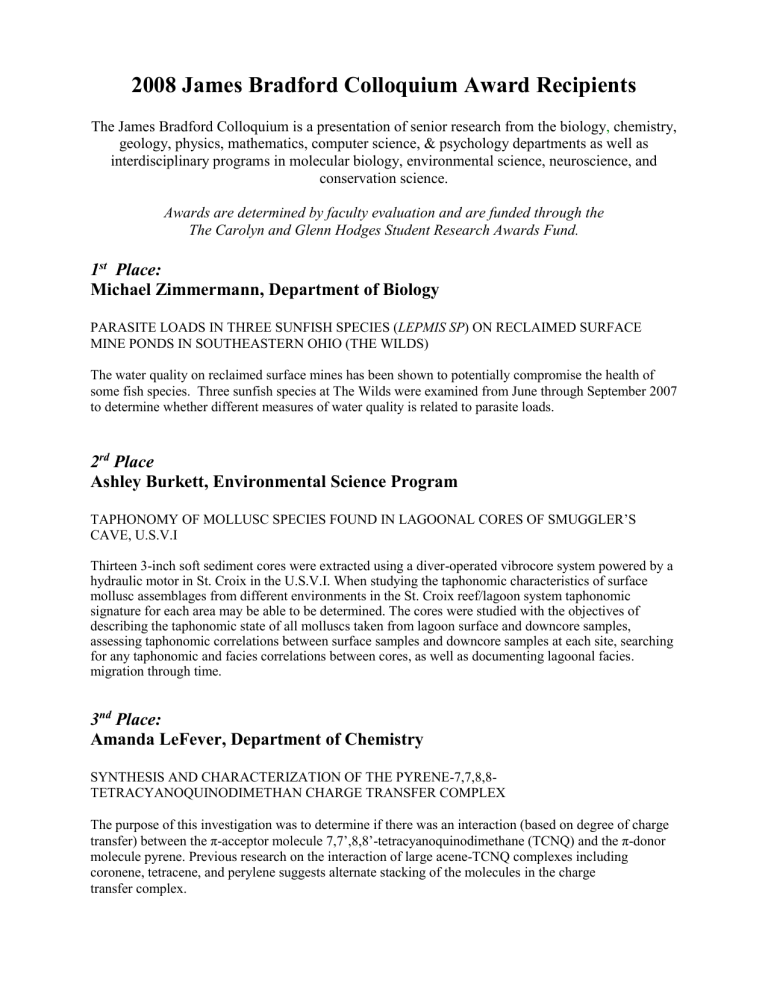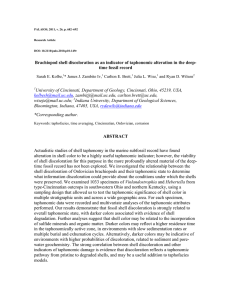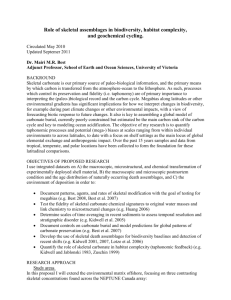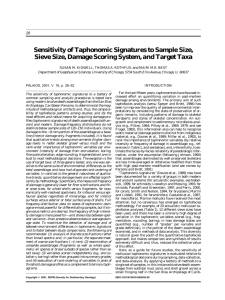BradfordWinners2008

2008 James Bradford Colloquium Award Recipients
The James Bradford Colloquium is a presentation of senior research from the biology , chemistry, geology, physics, mathematics, computer science, & psychology departments as well as interdisciplinary programs in molecular biology, environmental science, neuroscience, and conservation science.
Awards are determined by faculty evaluation and are funded through the
The Carolyn and Glenn Hodges Student Research Awards Fund.
1
st
Place:
Michael Zimmermann, Department of Biology
PARASITE LOADS IN THREE SUNFISH SPECIES ( LEPMIS SP ) ON RECLAIMED SURFACE
MINE PONDS IN SOUTHEASTERN OHIO (THE WILDS)
The water quality on reclaimed surface mines has been shown to potentially compromise the health of some fish species. Three sunfish species at The Wilds were examined from June through September 2007 to determine whether different measures of water quality is related to parasite loads.
2
rd
Place
Ashley Burkett, Environmental Science Program
TAPHONOMY OF MOLLUSC SPECIES FOUND IN LAGOONAL CORES OF SMUGGLER’S
CAVE, U.S.V.I
Thirteen 3-inch soft sediment cores were extracted using a diver-operated vibrocore system powered by a hydraulic motor in
St. Croix in the U.S.V.I. When s tudying the taphonomic characteristics of surface mollusc assemblages from different environments in the St. Croix reef/lagoon system taphonomic signature for each area may be able to be determined. The cores were studied with the objectives of describing the taphonomic state of all molluscs taken from lagoon surface and downcore samples, assessing taphonomic correlations between surface samples and downcore samples at each site, searching for any taphonomic and facies correlations between cores, as well as documenting lagoonal facies. migration through time.
3
nd
Place:
Amanda LeFever, Department of Chemistry
SYNTHESIS AND CHARACTERIZATION OF THE PYRENE-7,7,8,8-
TETRACYANOQUINODIMETHAN CHARGE TRANSFER COMPLEX
The purpose of this investigation was to determine if there was an interaction (based on degree of charge transfer) between the π-acceptor molecule 7,7’,8,8’-tetracyanoquinodimethane (TCNQ) and the π-donor molecule pyrene. Previous research on the interaction of large acene-TCNQ complexes including coronene, tetracene, and perylene suggests alternate stacking of the molecules in the charge transfer complex.






